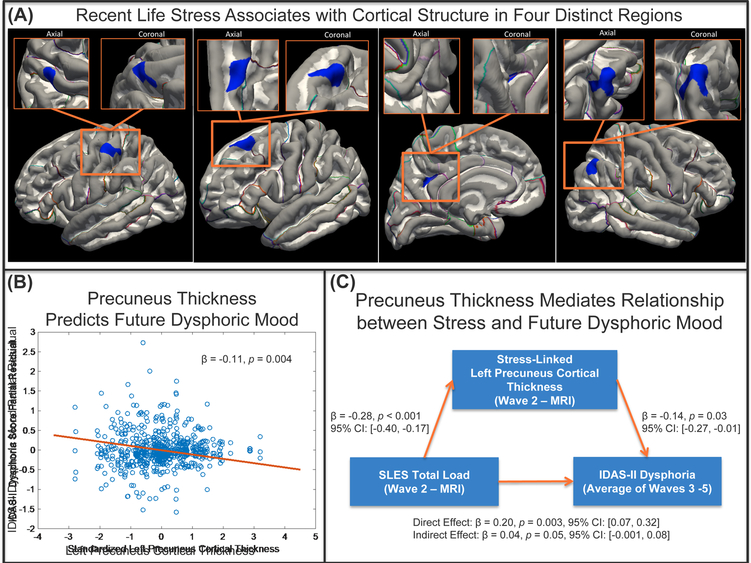Figure 2 Caption:
(A) Surface-based morphometry results surviving multiple comparisons correction for the stress analysis (cluster-wise p < 0.05, corrected). (Left): Thinner left post-central associated with more stress (Left-Center): Smaller left superior frontal associated with more stress (Right-Center): Thinner left precuneus associated with more stress (Right): Smaller right inferior parietal associated with more stress. (B) Partial residual for the IDAS-II Dysphoria scores across Waves 3–5 as estimated from the linear mixed model accounting for age, Wave, Wave2, IDAS-II dysphoria score at the time of imaging (Wave 2), and the stress-linked left precuneus cortical thickness estimate. Resulting model standardized beta for the fixed effect of precuneus cortical thickness shown and resulting p-value. (C) Mediation results shown for x = Stressful Life Events Schedule (SLES) total load, M = stress-linked left precuneus cortical thickness, and y = IDAS-II dysphoria score over Waves 3–5. Standardized model beta, p-values, and 95% confidence intervals (CIs) shown.

